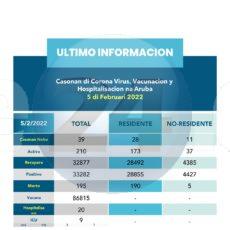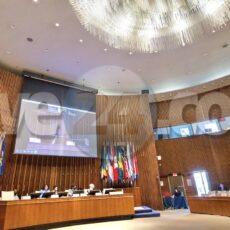

Countries should “act quickly, be ready, and save lives.” The Director also reports declining COVID-19 cases and deaths.
| Washington, D.C., February 17, 2021 (PAHO) With COVAX delivery of new vaccines expected soon in the Americas, Pan American Health Organization (PAHO) Director Carissa F. Etienne called for overcoming barriers to ensure “fair and equitable access.” “As we start delivering COVAX vaccines, and as we prepare for the steep scale-up ahead, we must be guided by our vision of fair and equitable access at every step of the way,” Dr. Etienne said during her weekly press briefing. “We must overcome the structural barriers that prevent the most vulnerable from being immunized and we can only do that by working together.” On Monday, WHO issued Emergency Use Listing (EUL) for two versions of the Oxford AstraZeneca vaccines, one from AstraZeneca-SKBio of Korea and the other from the Serum Institute of India. The approval cleared the way for distribution to the 37 countries in the Americas that are participating in COVAX. The countries will receive confirmation from COVAX regarding the timeline and number of doses within days or weeks, Dr. Etienne said. “Over the coming days, countries will face important tasks as they prepare for the arrival of vaccine doses,” she said. “Any small delays could set vaccinations back weeks, so countries must make vaccine readiness their number one priority.” She said there are two vital areas of preparation – the legal and regulatory frameworks required to deliver the vaccines and hiring and training staff needed to conduct mass immunization. “We urge all countries to act quickly, be ready, and save lives,” she said. For months PAHO has worked to help countries prepare, negotiating directly with manufacturers to streamline agreements and reduce the burden on national governments. PAHO has distributed guidance documents, held training sessions, and provided direct advice to countries. PAHO also has worked with WHO, UNICEF, and the World Bank to set up a Vaccine Introduction Readiness Tool – a platform that more than 31 countries are using to assess their preparedness. “We’re supporting countries on everything from logistics to coordinate the delivery of doses, to public information campaigns to ensure that people know where, when, and how to receive their vaccines,” Dr. Etienne said. “We are at the start of one of the largest immunization campaigns in our lifetime – an ambitious effort that requires health workers and other sectors to work together,” she continued. “We will have challenges, we will face barriers, we will see new problems. But we will overcome them by working together.” At least 70% of the population must be vaccinated in order to reach collective immunity. Turning to the pandemic’s toll on the region, Dr. Etienne reported that cases and deaths have declined in much of the Americas. In the past week, more than 1.2 million people in the Region were infected with COVID-19 and 39,000 died because of the virus. “While these numbers are staggering, they represent a 10% drop from weeks past – proof that public health interventions are helping us keep the virus at bay,” Dr. Etienne said. New infections are declining across North America. With the exception of Honduras, every country in Central America is seeing reductions in cases. In South America, most countries are reporting downward trends, though hot spots persist, particularly near the border between Peru, Colombia, and Brazil. Some Caribbean nations, too, are exceptions to declining numbers. The Dominican Republic continues to drive new infections in the region, and smaller islands such as Aruba, Barbados, Saint Lucia, and Saint Vincent and the Grenadines are reporting increases in cases. |












